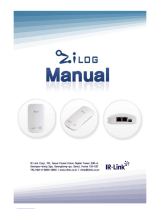
UM020107-1211 SSL Handshake Protocols
ZTP Network Security SSL Plug-In
User Manual
9
tion defined for a particular cipher suite used. The entire record is then encrypted and sent
to the peer. The peer decrypts the inbound message, verifies the MAC code; and if found
acceptable, it presents the data to the upper layer application. When all of the required
information is exchanged between the client and server, the underlying TCP connection is
severed.
Security Concepts
This section introduces some basic aspects of security as related to SSL. This information
is not intended to be a security reference or to explain the SSL protocol.
Identity. Identity is a set of attributes that uniquely distinguishes one particular entity from
other similar entities. Before the SSL client can establish a session, it must identify the
SSL server with which it must communicate. The identity of the server typically consists
of a host name (or IP address) and an underlying TCP port number.
Authentication. Authentication is the process of validating an entity’s identity. Upon
establishing an SSL session handshake, the SSL server sends the client an X.509 certifi-
cate that the client uses to verify the identity of the server. One of the fields in the certifi-
cate is a digital signature created by a third party (or possibly the server itself) called the
certificate issuer. By signing the certificate, the issuer vouches for the identity of the server
and asserts that there is a binding between the subject of the certificate (the SSL server)
and the public key contained in the certificate, implying that the actual SSL server to
which the certificate is issued is in possession of the corresponding private key.
After executing a public key exchange algorithm, the client and the server arrive at the
same shared secret if the server is in possession of the private key corresponding to the
public key in the server’s certificate. Therefore, if the client trusts the certificate issuer,
then the client can be assured of the server’s identity and begin transferring sensitive infor-
mation.
1. The TLSv1 and SSLv3 specifications allow for the use of completely anonymous
cipher suites in which neither client nor server authentication is performed. However,
the ZTP Network Security SSL Plug-In does not support the use of anonymous cipher
suites.
2. A trust relationship can be hierarchical in nature. A client can obtain a certificate from
an unknown server that was signed by an issuer that the client does not know/trust.
However, if the client obtains an issuer’s certificate, and if that certificate is signed by
a trusted issuer, then the client can implicitly trust the intermediate certificate issuer
and also trust the server’s certificate. In the SSLv3 and TLSv1 protocols, the server
sends the client a list of certificates. The first certificate contains the SSL server’s pub-
lic key, and any following certificates are the X.509 certificates of the entity that
issued the preceding certificate. These chains terminate the self-signed certificate
belonging to the root certificate authority.




















